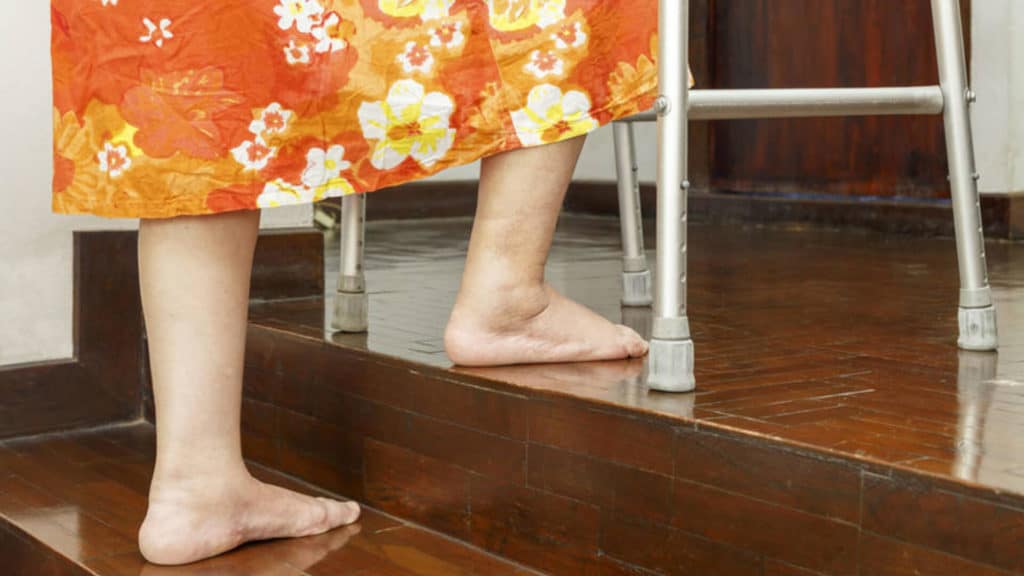The statistics on falls among seniors are startling: one in three older adults experiences a fall every year. Falls are the leading cause of injuries, both fatal and non-fatal, among seniors. Once an older adult experiences a fall, they are two to three times more likely to fall again. For the senior and their loved ones, the dangers associated with falling are downright frightening.
Fall prevention begins with learning more about what commonly causes a senior to fall.
6 Leading Reasons Older Adults Experience a Fall
Here’s what experts say can cause a senior to fall:
- Environment: If your loved one lives in an older home, it probably wasn’t designed with senior safety in mind. Another issue is that older adults are often unable to maintain a home properly to keep it safe. Uneven stair treads, poor lighting, worn carpeting, slippery tile, and outdated bathrooms can all put the senior at higher risk for a fall.
- Poor nutrition: Seniors who have difficulty planning and preparing healthy meals are at higher risk for poor nutrition and falls. Sometimes an older adult might have problems cutting and chopping healthy foods because of a health condition like arthritis. For other seniors, it might be a lack of transportation to the grocery store that causes them to rely on convenience foods, such as frozen dinners and canned goods, which are often high in fat and sodium and low in nutritional value. It can all add up to a senior who is weaker and less steady on their feet.
- Lack of exercise: Older adults often have a friend who has been seriously injured in a fall. It can frighten the senior enough to cause them to limit their physical activity. They believe doing so will decrease their risk for falling, while the opposite is actually the truth. Unless their physician has them on restricted activity, a physical fitness routine that combines strength training, balance, flexibility, and endurance can help them stay strong and avoid a fall.
- Dehydration: Older adults sometimes suffer from dehydration without even realizing it. Chronic health conditions and medication side effects can all contribute to dehydration. This can make them unsteady and at risk for a fall.
- Vision loss: Cataracts, glaucoma, and an outdated pair of glasses are common issues older adults encounter. These types of vision problems can lead to falls, especially in a house with poor lighting.
- Medication problems: Older adults process medication differently than younger adults. It puts them at higher risk to experience adverse reactions and side effects. Dizziness and drowsiness that can sometimes result may lead to a fall.
Fall Prevention for Older Adults
A few steps adult children and family caregivers can take to keep a senior loved one safe include:
- Home safety evaluation: Conduct a room-by-room safety evaluation of your senior loved one’s home. Look for potential fall hazards, such as throw rugs in the bathroom or a burned out light at the top of a stairway. Talk with your family member’s primary care physician if you need a referral for a professional who can help you complete this task.
- Review medications: Another tip is to create a list of all the medications your loved one takes (prescription and over-the-counter) and set up a time to review them with the pharmacist. They can help you identify potential problems, if there are any.
- Improve their diet: A well-balanced diet is one of the keys to aging well. If the senior you love is having trouble eating a balanced diet, talk with them to learn what their challenges are. You might want to consider a home delivered meal service—like Hello Fresh or Blue Apron—or a local Meals on Wheels program.
- Eye exam: Check with your family member to see how long it has been since they had an eye exam. Experts say an annual exam is important for the eye doctor to identify and address potential vision problems early. While Medicare won’t pay for an eye exam, Medicare Part B does pay for some vision care.
Lessons from the Blue Zones
Interested in learning more about aging well? Download the Vitality Senior Living Guide to Aging Well to explore how people in the Blue Zones of the world live longer, healthier lives.




